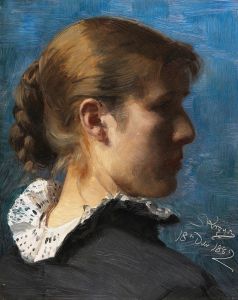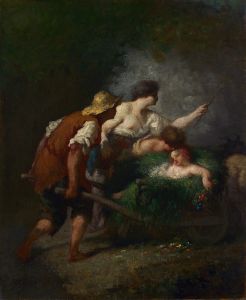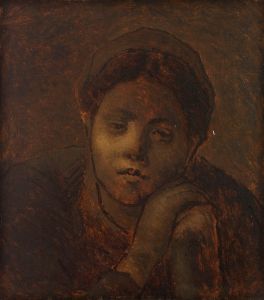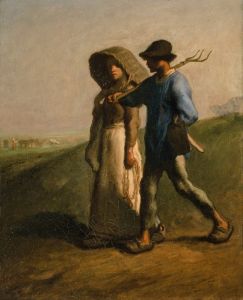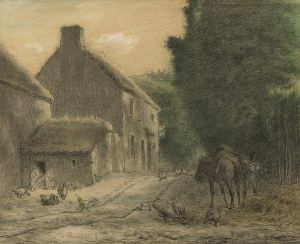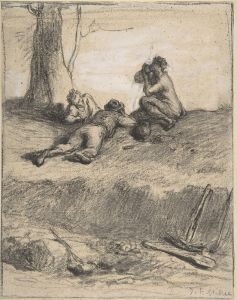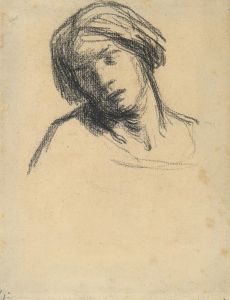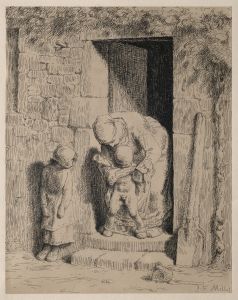
Young Woman
A hand-painted replica of Jean-François Millet’s masterpiece Young Woman, meticulously crafted by professional artists to capture the true essence of the original. Each piece is created with museum-quality canvas and rare mineral pigments, carefully painted by experienced artists with delicate brushstrokes and rich, layered colors to perfectly recreate the texture of the original artwork. Unlike machine-printed reproductions, this hand-painted version brings the painting to life, infused with the artist’s emotions and skill in every stroke. Whether for personal collection or home decoration, it instantly elevates the artistic atmosphere of any space.
Jean-François Millet, a prominent French painter and one of the founders of the Barbizon school, is renowned for his depictions of rural life and peasant subjects. One of his lesser-known works, "Young Woman," exemplifies his focus on the dignity and simplicity of rural existence. Although not as famous as some of his other paintings like "The Gleaners" or "The Angelus," "Young Woman" still reflects Millet's characteristic style and thematic concerns.
Millet was born in 1814 in the village of Gruchy, Normandy, and his upbringing in a rural farming community profoundly influenced his artistic vision. He moved to Paris in 1837 to study art, but it was his return to the countryside that truly shaped his career. Settling in Barbizon, near the Forest of Fontainebleau, Millet became part of a group of artists who sought to break away from the urban-centric art scene of Paris and instead focus on the natural world and rural life.
The painting "Young Woman" captures a moment of quiet introspection, a common theme in Millet's work. The subject is depicted with a sense of realism and empathy, highlighting Millet's commitment to portraying the lives of ordinary people with dignity and respect. The young woman in the painting is likely engaged in a moment of rest or contemplation, a theme that resonates with Millet's broader body of work, which often emphasizes the human connection to nature and the land.
Millet's technique in "Young Woman" showcases his skillful use of light and shadow to create depth and texture. His brushwork is both delicate and expressive, capturing the subtleties of the woman's expression and the simplicity of her surroundings. This attention to detail and the ability to convey emotion through composition and color are hallmarks of Millet's style.
Throughout his career, Millet faced criticism from some quarters for his focus on peasant subjects, which was considered unconventional at the time. However, his work gradually gained recognition and appreciation, influencing later artists such as Vincent van Gogh and inspiring movements like Realism and Impressionism. Millet's dedication to depicting the rural poor with compassion and authenticity challenged the artistic norms of his era and paved the way for future generations of artists to explore similar themes.
"Young Woman" fits within this context as an example of Millet's enduring interest in the human condition and the beauty of everyday life. While specific details about the painting's creation and history may not be as well-documented as some of his other works, it remains an important piece within Millet's oeuvre for its representation of his artistic philosophy.
In summary, "Young Woman" by Jean-François Millet is a testament to the artist's commitment to portraying rural life with sincerity and depth. Through his nuanced depiction of a solitary figure, Millet invites viewers to reflect on the quiet dignity of ordinary people and the timeless connection between humanity and the natural world.








